A team of researchers yesterday unveiled an artificial intelligence (AI)-assisted blood flow volume sensor for people receiving hemodialysis to help allow early treatment when arteriovenous fistulas become obstructed.
The sensor, developed through six years of effort, was introduced by Paul Chao (趙昌博), a distinguished professor in National Chiao Tung University’s department of electrical and computer engineering, at a news conference at the Ministry of Science and Technology in Taipei.
The number of people receiving dialysis last year reached a record 90,000, with their medical costs totaling NT$44.9 billion (US$1.47 billion), Chao said, citing Ministry of Health and Welfare data.
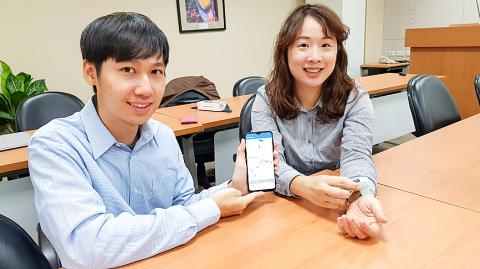
Photo: Chien Hui-ju, Taipei Times
Taiwan, which is often called the “island of dialysis,” has much lower dialysis costs than other nations, but patients still need to visit a hospital three times a week and spend more than NT$600,000 per year for the treatment, Shin Kong Wu Ho-su Memorial Hospital dialysis center director Lin Bing-shi (林秉熙) said.
An arteriovenous fistula, which is created surgically in people with kidney disease to connect their blood system to a dialysis machine, is the “lifeline” of a dialysis patient, and it might cause complications, or even death if it is blocked, he said.
To help patients monitor their blood flow volume, the team developed a non-invasive sensor using photoplethysmography (PPG) — an optical measurement method — along with a mobile app that can be connected to hospital systems, Chao said.
Existing sensors are either invasive or ultrasonic, which have to be operated by medical professionals, he said.
By comparison, the new sensor — which is smaller than a smartphone — allows patients to take measurements at home, and the test result can be viewed on the mobile in 10 seconds, Chao said.
Chao last month received the Sensors Council Technical Achievement Award in the field of Sensor Systems or Networks for the new sensor.
The award is presented by the US-based Institute of Electrical and Electronics Engineers.
While PPG is not a new technique, the team employed a special wavelength to measure blood volume changes without hurting patients, and it also developed a special circuit and an AI model to process the signals, said Shawn Hsu (徐碩鴻), director-general at the ministry’s Department of Engineering and Technologies.
The collaboration between the medical and electronics fields would benefit people receiving dialysis — a less-charted area for technological innovation, Hsu added.
The team would start mass producing the sensor and hopes to keep its cost under a few thousand New Taiwan dollars, Chao said.
The system has collected nearly 200 pieces of data from medical centers, with a precision of 91 percent, he said, adding that it needs to collect more data to obtain the Food and Drug Administration’s approval.
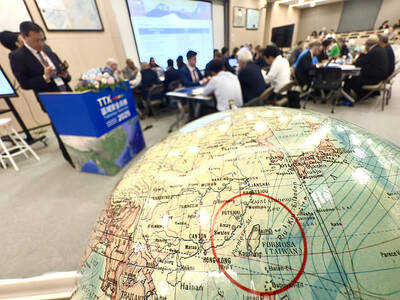
DEFENSE: The National Security Bureau promised to expand communication and intelligence cooperation with global partners and enhance its strategic analytical skills China has not only increased military exercises and “gray zone” tactics against Taiwan this year, but also continues to recruit military personnel for espionage, the National Security Bureau (NSB) said yesterday in a report to the Legislative Yuan. The bureau submitted the report ahead of NSB Director-General Tsai Ming-yen’s (蔡明彥) appearance before the Foreign and National Defense Committee today. Last year, the Chinese People’s Liberation Army (PLA) conducted “Joint Sword-2024A and B” military exercises targeting Taiwan and carried out 40 combat readiness patrols, the bureau said. In addition, Chinese military aircraft entered Taiwan’s airspace 3,070 times last year, up about
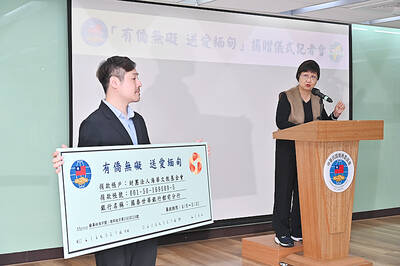
The Overseas Community Affairs Council (OCAC) yesterday announced a fundraising campaign to support survivors of the magnitude 7.7 earthquake that struck Myanmar on March 28, with two prayer events scheduled in Taipei and Taichung later this week. “While initial rescue operations have concluded [in Myanmar], many survivors are now facing increasingly difficult living conditions,” OCAC Minister Hsu Chia-ching (徐佳青) told a news conference in Taipei. The fundraising campaign, which runs through May 31, is focused on supporting the reconstruction of damaged overseas compatriot schools, assisting students from Myanmar in Taiwan, and providing essential items, such as drinking water, food and medical supplies,
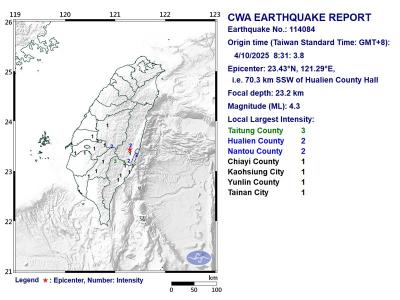
A magnitude 4.3 earthquake struck eastern Taiwan's Hualien County at 8:31am today, according to the Central Weather Administration (CWA). The epicenter of the temblor was located in Hualien County, about 70.3 kilometers south southwest of Hualien County Hall, at a depth of 23.2km, according to the administration. There were no immediate reports of damage resulting from the quake. The earthquake's intensity, which gauges the actual effect of a temblor, was highest in Taitung County, where it measured 3 on Taiwan's 7-tier intensity scale. The quake also measured an intensity of 2 in Hualien and Nantou counties, the CWA said.
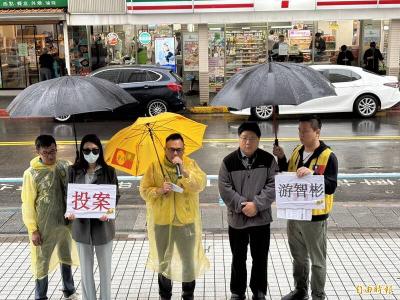
New Party Deputy Secretary-General You Chih-pin (游智彬) this morning went to the National Immigration Agency (NIA) to “turn himself in” after being notified that he had failed to provide proof of having renounced his Chinese household registration. He was one of more than 10,000 naturalized Taiwanese citizens from China who were informed by the NIA that their Taiwanese citizenship might be revoked if they fail to provide the proof in three months, people familiar with the matter said. You said he has proof that he had renounced his Chinese household registration and demanded the NIA provide proof that he still had Chinese